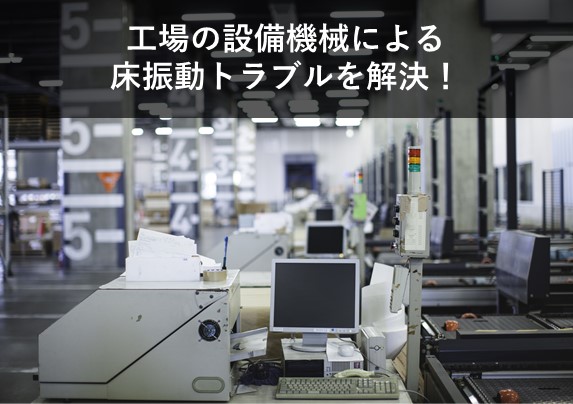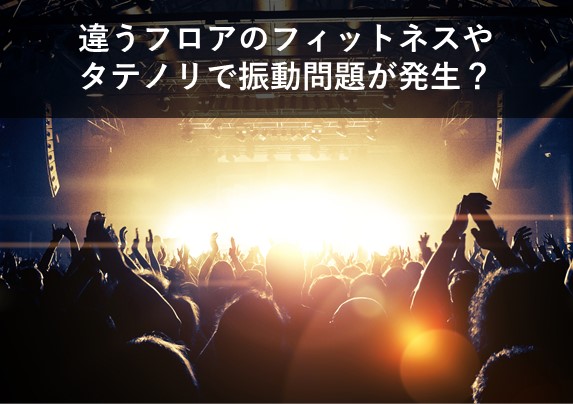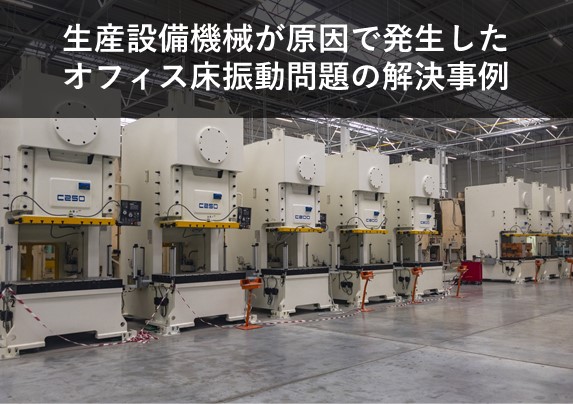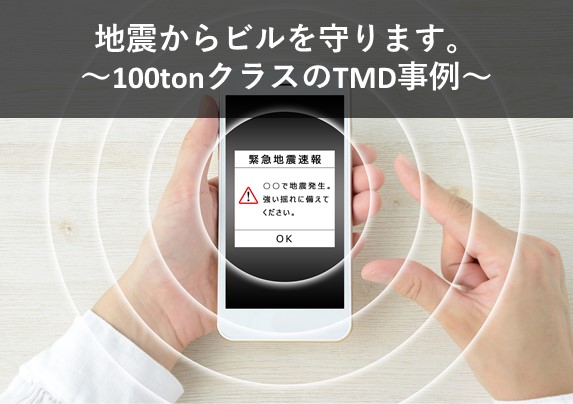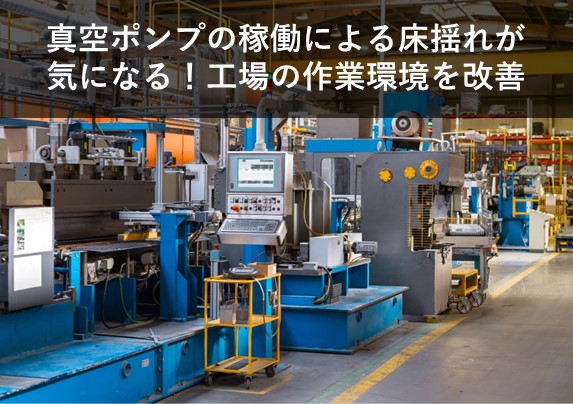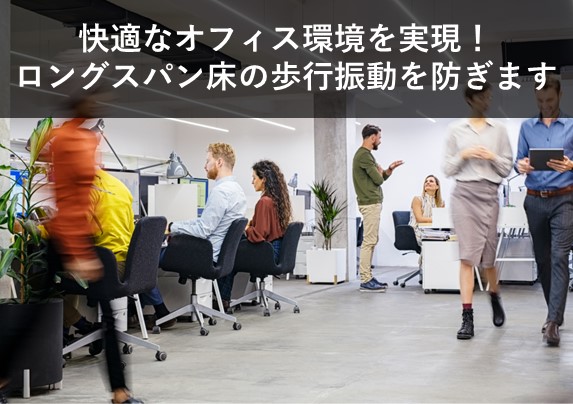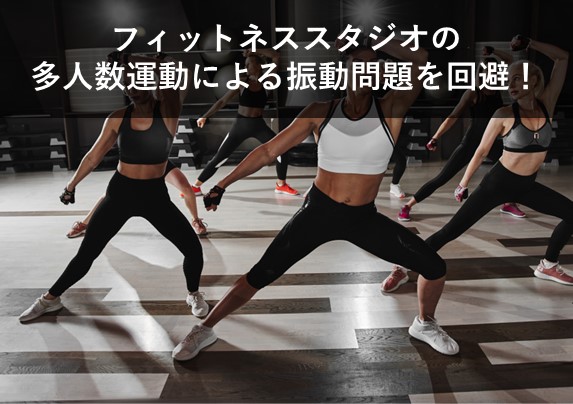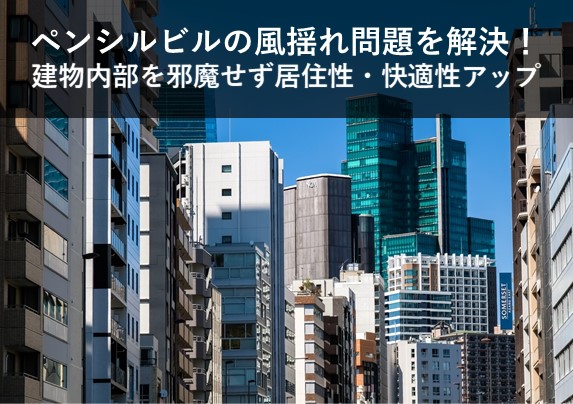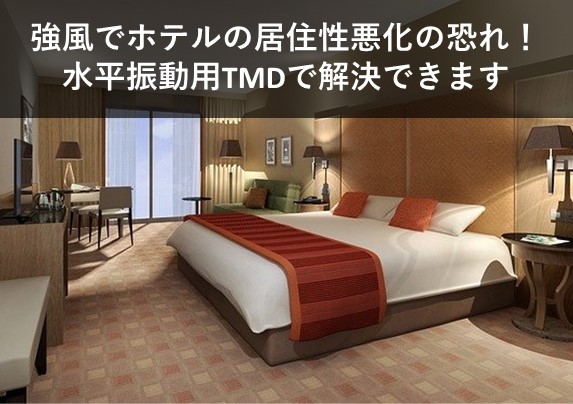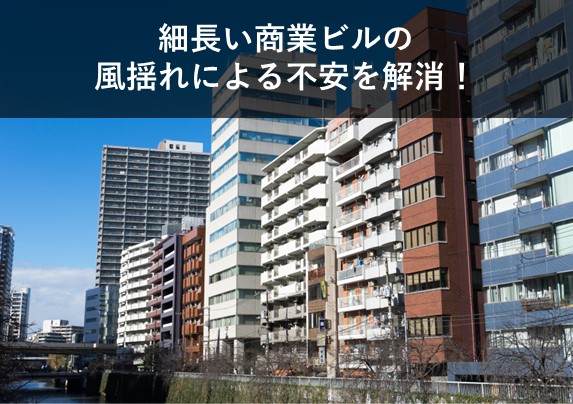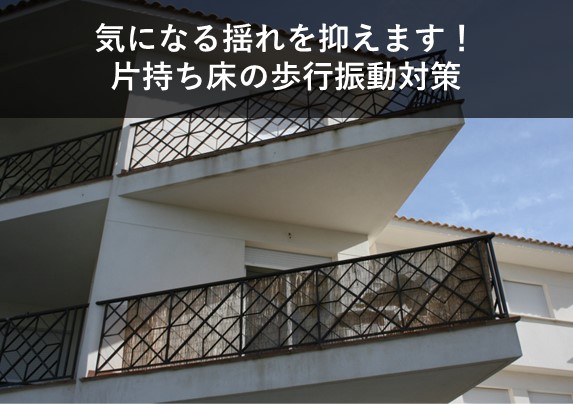In recent years, floor shaking caused by various vibration sources (traffic vibration, fitness and walking vibration, equipment and machinery vibration, etc.) in buildings has become a growing problem, worsening occupant comfort and the work environment. Yacmo has developed the following countermeasures to improve these problems.AMD(Active-Mass-Damper) andtheater missile defense(Tuned-Mass-Damper), butWhat is the difference between the two? What are the features? What are the costs? What about maintenance?...compared below.

Operating Principle and Components
AMD (=Active Mass Damper) and TMD (=Tuned Mass Damper) are both vibration control devices called mass dampers. The TMD absorbs vibrations in the resonance range of the floor by tuning the weight/spring to the natural frequency of the floor, while the AMD absorbs vibrations in the resonance range of the floor by controlling the reaction force to absorb vibrations by actively moving the weight with the power of a motor. A comparison of the mechanical model and the hardware configuration of the device is shown below.


Features, Cost, and Maintenance
| Comparison items | AMD | theater missile defense |
| (i) How different is the vibration reduction effect of the floor? What are the differences? →Details. | Small mass and large effect (small installation space). A single unit is effective against multiple vibration modes of floors. | Basically, the effect is determined by the size of the movable mass. One unit is required for each mode. |
| What happens if the natural frequency of the floor changes due to a change in the loading load? →Details. | This can be handled relatively easily by adjusting software parameters. | Mechanical tuning of the spring mass to the natural frequency of the floor again is required. |
| 3) How much difference does it make in cost? →Details. | Comparing the same mass mass, the AMD is more expensive, requiring actuators, sensors, and controllers, but the AMD is more effective with a smaller mass and fewer units. For reference, here is a summary comparison of the relationship between movable mass and effectiveness. | |
| (4) Is maintenance necessary? | Regular maintenance is recommended. Replacement of some electrical parts is recommended at a certain period of time. | No maintenance is required. |
(1) How different is the vibration reduction effect of the floor? What difference does it make?
This is the result of a comparison experiment between AMD and TMD of the same level, and how much difference in effectiveness there is.
The figure below shows the vibration acceleration spectrum of a RC office floor (9.8 m between columns x 4.5 m span) when subjected to sine sweep excitation at 5 Hz to 20 Hz using a vibration exciter. The vibration reduction effect of each can be compared. The comparison is made under almost the same moving mass conditions: 40 kg for TMD and 50 kg for AMD.
There are three natural vibration modes at 11.9 Hz, 17.1 Hz, and 19.1 Hz, and their spectra are outstanding, but in the case of TMD, only the tuned first-order mode shows an effect of 2-3 dB. On the other hand, AMD reduces all first-order to third-order modes, and the amount of effect is much larger than that of TMD, with more than 10dB for the first-order mode and about 5dB for the second- and third-order modes.
This comparison with nearly identical moving masses shows that AMD is much more effective for multiple modes.

(2) What happens if the load changes and the natural frequency of the floor changes?
It is common for the natural frequency of a floor to change as the loading load changes due to a change in use or the addition of equipment.
Here is an example of AMD tracking such a change in the natural frequency of the floor. At a certain factory, after AMD was introduced to improve the working environment due to production equipment vibration, a new production equipment line was added, and the natural frequency of the floor changed from 7.5 Hz to 6.5 Hz, which is quite low. The following figure shows the result of adjusting software parameters to keep up with this change and continue to demonstrate its effectiveness.
In such a case, the TMD would go out of tune and lose most of its effect, which would require time-consuming work such as spring replacement, but with AMD, the work can be done by connecting a PC to the control panel (several hours).

(iii) How much difference does the cost make?
The figure below summarizes and compares the relationship between the movable masses and the effect ≈ (damping force = reaction force of AMD and TMD). It can be seen that AMD requires a much smaller mass than TMD to achieve the same effect (force to damp vibration). In addition, the (NEW) YAMD-0600 equipped with an AC servo & ball screw type actuator, which has been developed for factory production equipment, has even greater thrust and is more compact than the previous AMD equipped with a linear motor.
As for cost, AMD is more expensive when compared with the same mass mass, as it requires actuators, sensors, and controllers, but AMD is more effective with a smaller mass and fewer units, so it is necessary to consider the actual number of units required (○ kg x △ units for AMD, ● kg x □ units for TMD ), and compare them as follows. The actual number of AMDs and TMDs required will depend not only on the floor area, but also on how much excitation force the target vibration source has and how much the floor vibration being generated needs to be suppressed. Yacmo can provide AMD and TMD specification studies and consulting on environmental vibration design through measurement and simulation.


If you have any technical questions or would like to discuss costs, please contact us.
Related Pages
AMD's Construction Achievements
TMD Construction Results
Product page
AMD and ultra-thin vibration damping device (TMD) on display in the showroom
The Active Mass Damper (YAMD-0050), a vibration control device (AMD) that uses electricity to control vibration, and the Floor Mate (FM-30), an ultra-thin vibration control device (TMD) that can be placed under OA floors and other narrow spaces to reduce vibration, are on display at the showroom in the basement of the Tokyo Office. Visitors will be able to experience the vibration reduction effect of these products.
If you would like to schedule a tour, please contact us using the contact form linked below. A representative will contact you shortly.

